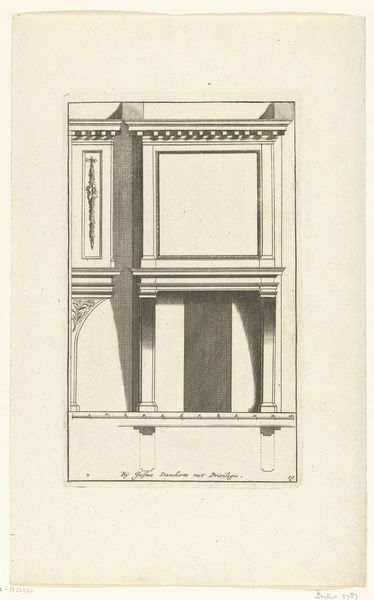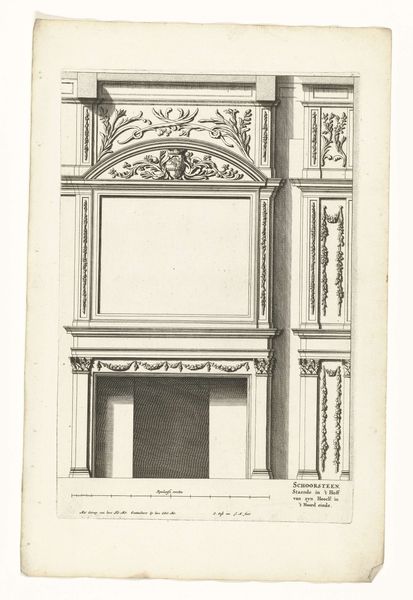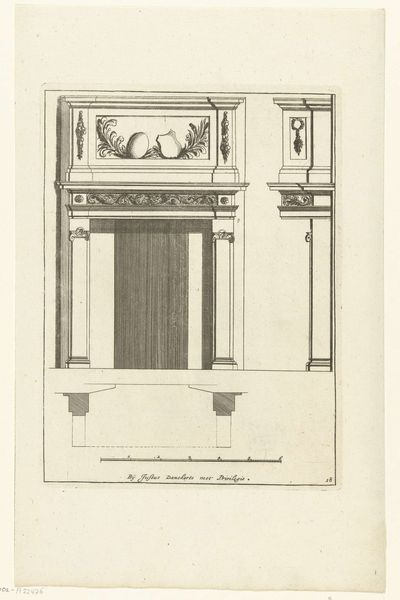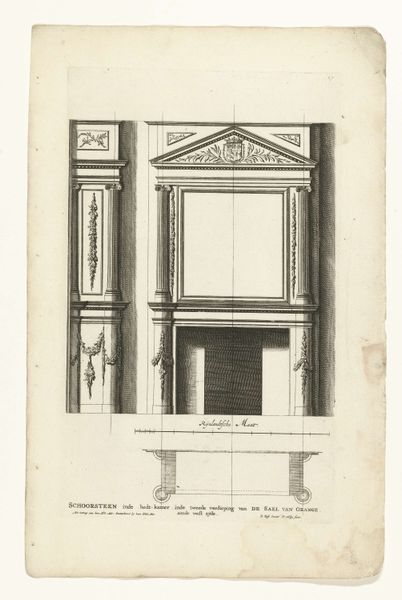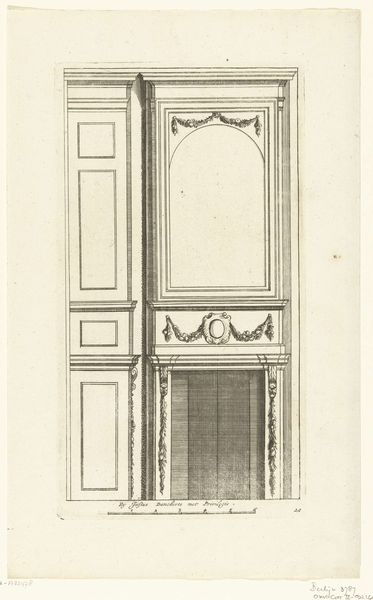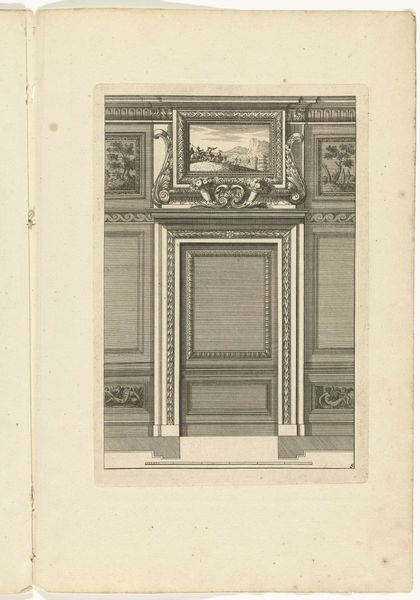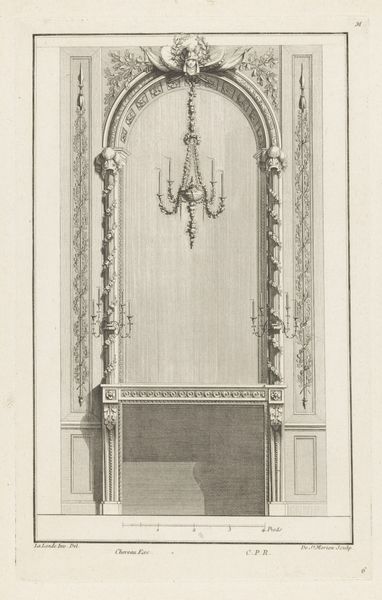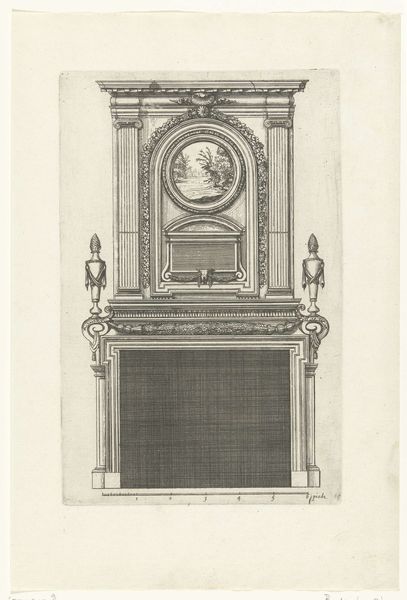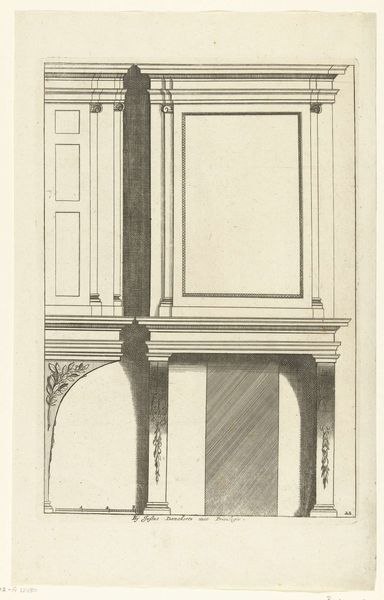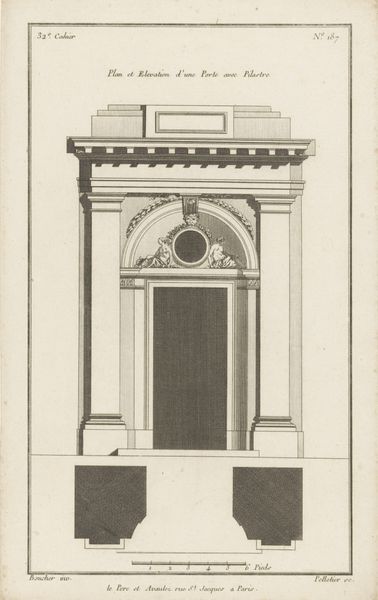
drawing, print, etching, engraving, architecture
#
drawing
#
baroque
# print
#
etching
#
etching
#
form
#
line
#
engraving
#
architecture
Dimensions: height 244 mm, width 135 mm
Copyright: Rijks Museum: Open Domain
Curator: This engraving, attributed to Cornelis Danckerts I, dates from approximately 1675 to 1686, and we’re examining it here in the Rijksmuseum. It's titled "Onderboezem." Editor: It strikes me as a rather austere piece, almost architectural in its precision. The linework is incredibly detailed, creating a sense of depth and solidity despite the lack of color. It’s incredibly balanced, too, isn't it? Curator: Indeed. The artist appears to present an idealised rendering, rather than a physical depiction of an architectural element. This ideal carries over beyond the realm of architecture too: motifs like garlands were symbols of victory and life's transience during this era, reminding viewers to think on life's impermanence. Editor: Those details, the garlands and the shields, lend a sense of ceremonial weight, even though rendered with such restraint. The etching technique seems so perfectly suited to depicting stone and light. Notice the shading used to create a sense of recession, pushing the architectural details back into space, giving such dimensionality to such an unassuming image. Curator: Etchings like this played a crucial role in disseminating architectural styles. Think about how this image helped in distributing design ideas to those beyond direct exposure. It embodies Baroque principles but channels that aesthetic into something subtle. Editor: Right, a silent conversation occurring between patron and architect or perhaps between one architect to another. So, as you say, though subtle it would influence many in practical application for a new design and aesthetic. It's fascinating how such simple lines create a dialogue that bridges time and place. Curator: Yes, even now this printed artifact can provoke ideas and provide insights into how aesthetics from that time function as cultural inheritance to our age. Editor: The play of light and shadow is beautiful too—perhaps it reminds us that even permanence can fade and shift with perception, too.
Comments
No comments
Be the first to comment and join the conversation on the ultimate creative platform.
